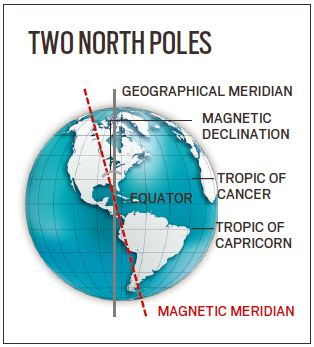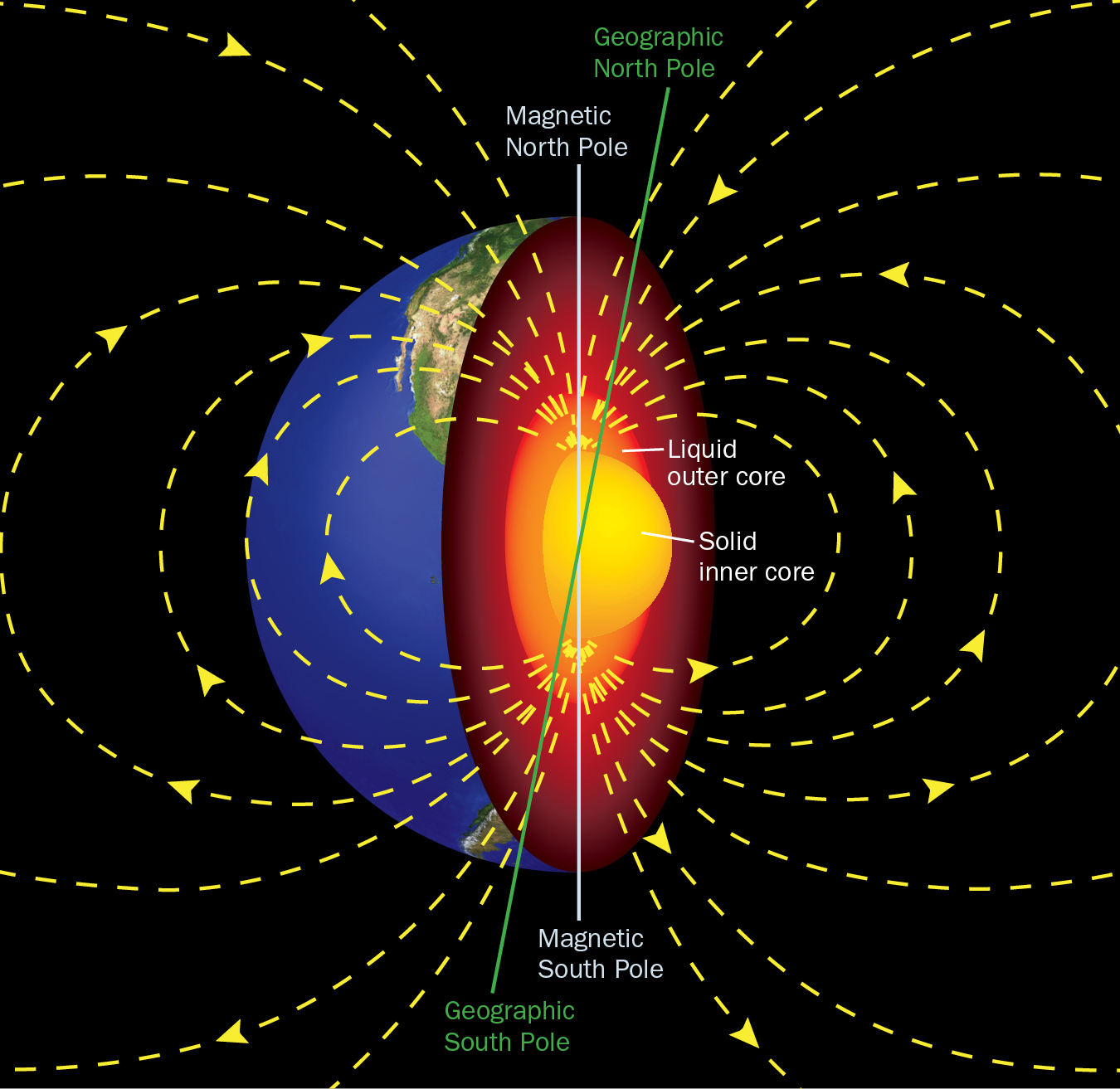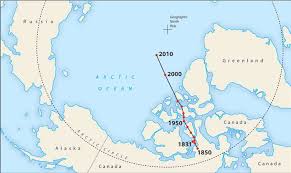Why in news?
The magnetic north pole is, reportedly, drifting fast away from the Canadian Arctic and towards Russia.
What are the two poles on earth?
- The Earth has two pairs of north and south poles.
- The geographic poles are defined by the axis around which the planet rotates, and these are fixed.
- The Earth behaves much like a giant bar magnet and this behaviour defines its magnetic north and south poles.
- But these are not static as the geographic poles. [A compass points towards magnetic north.]

What causes the magnetic field?
- The origin of Earth’s magnetism lies in its outer core which is a more than 2,000-km layer that surrounds the central core or the innermost part.
- The outer core is comprised of liquid iron and some other metals like nickel.
- This liquid iron is in constant motion due to Earth’s rotation and various other reasons, and this motion produces a magnetic field.

How have the positions changed?
- The constant motion is the reason for the magnetic poles to not coincide with the geographical poles.
- It is also why the Earth’s magnetic behaviour is far more complex than that of a simple bar magnet.
- Resultantly, the magnetic north poles and south poles move around sometimes erratically.
- Over large periods of time, they change their locations significantly, sometimes even interchanging their positions.
- Around 780,000 years ago, the magnetic north pole was getting somewhere near where the magnetic south pole currently is.
- But this time period of shift in positions is not fixed.
What is the recent development?
- In 1831, it was discovered that the magnetic north pole was located somewhere over northern Canada.
- Since then, the magnetic north pole has been moving hundreds of miles across the Canadian Arctic towards Russia.
- It has now been found that the pace of this movement has suddenly increased, quite significantly.
- It has been moving from about 14-15 km per year till the 1990s to about 55 km per year in the last few years.
- This, now, led to scientists updating the World Magnetic Model (WMM) that tracks this movement.
- Every 5 years, a new and updated version of the WMM is released; the current update is a year ahead of the schedule.
- The faster movement of the magnetic north pole had made WMM so inaccurate that it was about to exceed the acceptable limit for navigational errors.
What is the significance?
- Given the extremely hot temperatures, the phenomena happening inside the earth can only be studied indirectly or through computer modelling.
- So the causes for the fast movement are uncertain yet.
- But the shifting of magnetic north pole would throw some new insights into the phenomena happening deep inside the Earth’s surface.

What is the consequence?
- A standalone school compass would not be affected by this change. It will reorient itself to the new resultant magnetic north pole.
- But given its less precise nature and deflections due to local magnetic fields, this is no longer used for modern requirements of navigation.
- The compasses that are used in modern instrumentation are much more sophisticated, digital and more accurate.
- The entire transportation sector, especially aviation and shipping, depends on correctly knowing the position of magnetic north.
- Similarly, it is crucial for militaries, for firing their missiles or for other purposes, and other civilian applications as well.
- The compasses now have to be recalibrated to reflect the change in the magnetic north pole.
- The WMM has released a set of software that will update these instruments to the new positions of the magnetic north pole.
Source: Indian Express
Prelims Mock Test Series 2019. 27 Our questions reflected in UPSC 2018 exam. Online and Classroom.


